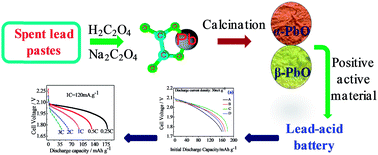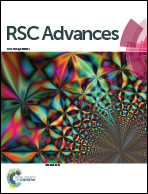Recycling lead from spent lead pastes using oxalate and sodium oxalate and preparation of novel lead oxide for lead-acid batteries
Abstract
A sustainable method, with minimal pollution and low energy cost in comparison with the conventional smelting method, is proposed for treating components of spent lead acid batteries with oxalate and sodium oxalate. The pure lead oxalate precursor of PbC2O4 is the only product crystallized in the leaching experiment. Lead oxalate is readily crystallized from the solution due to its low solubility and can be combusted to directly produce lead oxide as a precursor for making new battery pastes. Both lead oxalate and the oxide products have been characterized by means of thermogravimetric analysis (TGA) and X-ray diffraction (XRD). The results show that the lead oxides synthesized at different calcination temperatures are comprise of α-PbO and β-PbO. The batteries assembled using the novel lead oxide powder as the positive active material show good cyclic stability for 50 charge/discharge cycles. The cell using lead oxide powder containing 15 wt% β-PbO exhibits excellent initial capacity, cycling performance and high-rate discharge characteristics and can deliver a discharge capacity of 180 mA h g−1 at 30 mA g−1 and more than 60 mA h g−1 at 240 mA g−1. Within 50 cycles, its capacity loss is low (5%) with excellent cyclic stability.


 Please wait while we load your content...
Please wait while we load your content...